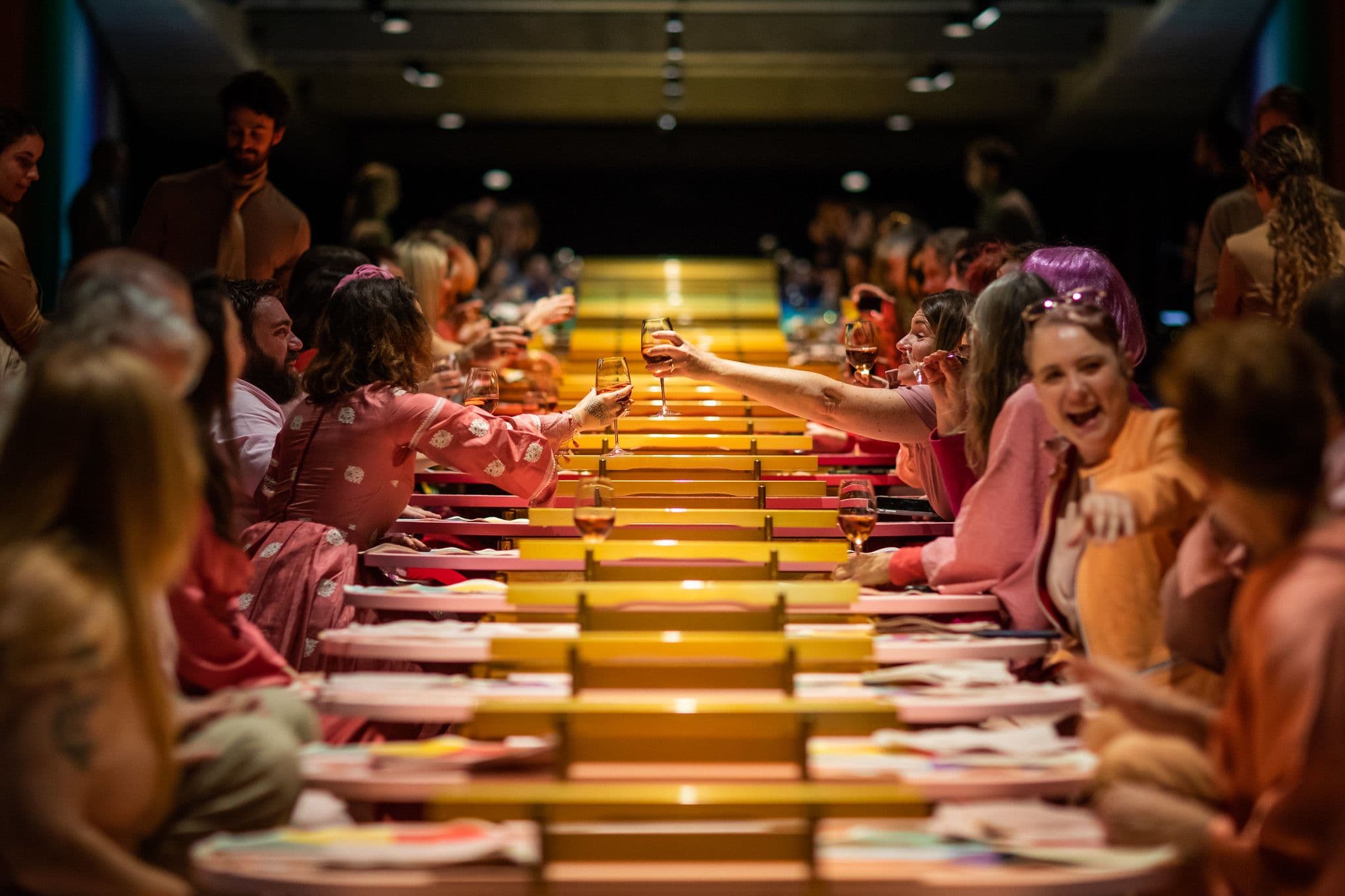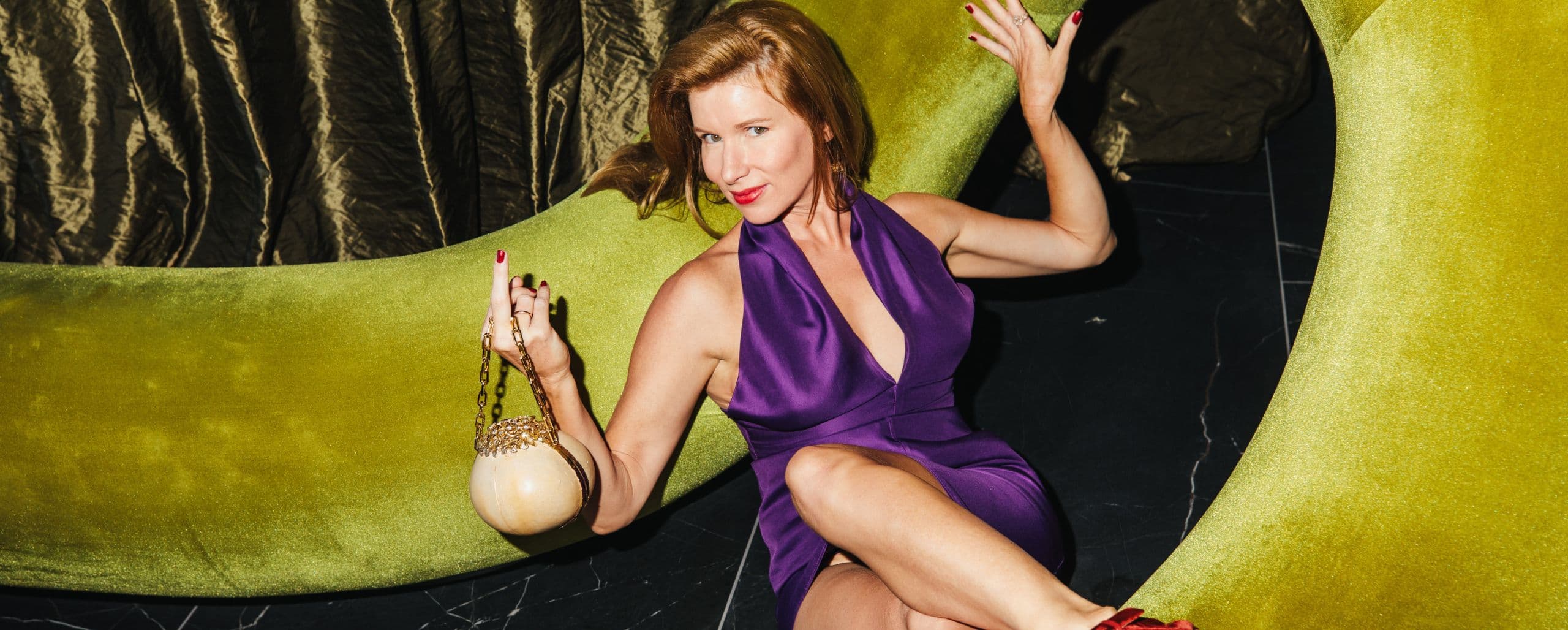Kirsha Kaechele

Eat the Problem
Eat the Problem is the culmination of Kirsha Kaechele’s lifelong quest to turn flaws into features, shit into gold.
What happens if we do something with our problems, rather than simply bemoan them? In this case, the problem lies with species that invade and degrade native ecologies. And the solution, perhaps, is to eat them.
Kirsha has made a book about it (typically, gob-smackingly deluxe), and created an exhibition to go with it (with a little help from some friends). The exhibition revolves around the world’s largest glockenspiel, tuned to 432 Hz—the frequency of the Earth; a grand array of opulent feasts; installation and performances by artist Elena Stonaker; and a series of spiritual health treatments, scientifically proven to make you 100 per cent less boring and bad.
The book is in one sense a cookbook: a collection of recipes from world-renowned chefs, artists, writers and thinkers of all kinds, as well as an overview of Barry’s war on feral cats, an interview with a Tasmanian pest-control expert who strictly kills with love, seven signs you’ve been abducted by aliens, and more (content, not signs).
Each recipe revolves around an invasive species that has wreaked havoc on the native biosphere. Think crispy-skin cane toad, snake jerky (snerky), feral camel toes, and myna bird parfait, all washed down with a boar’s eye Bloody Mary.
The ultimate invader is, of course, the human, and it is our taste for boring / cruel / unhealthy things like cows that is causing the most damage of all. Option A is to rub us out (and cook us with plantain leaves under hot stones). But if we’re not game for that the least we can do is alter our eating habits, and in doing so change an ecological nightmare into something totally delish. And morally superior. Also, it means Kirsha can wear fur without feeling guilty (made from nutria, which was where this whole thing started: Kirsha’s encounter with the invasive nutria of Louisiana). The fur is the main thing. Plus morals etc.
The cookbook is also, of course, not just a cookbook, but an act of communal creativity, expressed in response to a communal problem. It is a manifestation of the philosophy that coheres Kirsha’s practice as an artist and curator as a whole: a love of chaos and complexity, the system ‘as it is’, while finding ways to act that bring out its beauty, and even make a little improvement here and there, but without the dorky do-gooding.
The feasts are rituals of transformation, and celebrations of community; a series of impossibly sumptuous courses of invasive species, prepared by Mona’s Head Chef Vince Trim.
In Kirsha’s words:
Every element of the feast—the table, cutlery, dishes and performances—are artworks. Nothing unfolds predictably, and thus the feast is a series of ‘ah-ha!’ moments. When a guest is handed a piece of cutlery they may ask, ‘What is this?’ Only when the accompanying dish is served or the musical score takes a new turn does the role of the object in the overall scene become clear. Slowly, the function of various dining objects is revealed; a process of discovery forces guests to be fully present, and engage in the act of dining with renewed joy.
In addition to being the world’s largest glockenspiel, the sound sculpture at the heart of the exhibition also serves as a feasting table, seating seventy-two guests. Each chef-prepared, invasive-species themed course is accompanied by a performance. The courses are monochromatic, beginning with white and progressing through the spectrum to black; each is served with music expressive of the colour, with the goal to guide guests into a state of synaesthesia.The feasts take place on top of a new musical invention. As there is no name for it, Kirsha decided to call it the world’s largest glockenspiel. Every Sunday, composer Kelly Ottaway and Mona music curator Brian Ritchie bring modular compositional frameworks to this gargantuan metallophone with nearly infinite sustain and resonant harmonics. This is adapted by guest composers, performers and improvisors ad infinitum. Long after Kelly and Brian’s ashes are interred in the Mona Cinerarium (to be clear: no particular plans for this to happen any time soon), composers will be making beautiful noise with these ginormous pulsating slabs of aluminium. Kelly’s debut composition will be an impressionistic sound poem evoking the moods prompted by various colours. Synesthetic sound therapy!
If you like to cuddle your art, visit Elena’s soft sculpture garden where you can contemplate the beauty of the shadows and depths of the many faces of her psychedelic world while nestled safely in the ample bosoms of one of her Big Mamas or buried under a pile of soft skulls. If you’d rather keep your hands busy than take a nap, come back for Artist as Muse, a whimsical, surrealist take on figure drawing where you can be in a dream without closing your eyes.
We invited some friends over for tea.
You can now watch Kirsha’s Eat the Problem culinary new world order come to life on the ABC, cooked up by our chef Vinnie, hosted by Tony Armstrong and filmed at Mona (and beyond). ‘We all know that it’s important to live in connection with nature (boring). But it’s exciting—culinarily titillating—to eat in a way that connects us to the systems we are part of (while not fucking the world)’, says Kirsha, throwing a cane toad on the barbie. Eat the Invaders continues her lifelong quest to turn flaws into features, shit into gold—or rather, camel barbacoa cooked in agave with chargrilled nopales, prickly pear and mezcal salsa, and camel milk curd.









